Gordon, R.M. (1998) The Medea Complex and the Parental Alienation Syndrome:
 One way to abuse children is to use them for one’s own dysfunctional needs. The children may be loved, but they are harmed by exploitive love. “The Medea Complex and the Parental Alienation Syndrome: When Mothers Damage Their Daughter’s Ability to Love a Man” was a chapter I wrote that was published in 1998 in the book The Mother – Daughter Relationship Echoes Through Time.
One way to abuse children is to use them for one’s own dysfunctional needs. The children may be loved, but they are harmed by exploitive love. “The Medea Complex and the Parental Alienation Syndrome: When Mothers Damage Their Daughter’s Ability to Love a Man” was a chapter I wrote that was published in 1998 in the book The Mother – Daughter Relationship Echoes Through Time.
Dr. Gerd H. Fenchel ran a successful conference on the mother-daughter relationship and later asked if I wished to contribute a chapter to his book on the subject. That was the only type of family relationship I did not experience and I felt that it was a mystery for me. I did however have experience with the mother-daughter relationship through my work as a court appointed child custody evaluator and as a psychotherapist.
I had seen the effects of a parent turning his or her (self-object) child against the other parent without justification. It is not only cruel to the alienated parent, but it produces life long harm to the child. It is psychological child abuse.
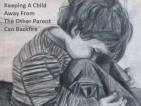 I first presented on Parental Alienation Syndrome soon after Richard Gardner published his first book on it in 1987. In 1987, I presented “Suggestions on the Use of the MMPI in child custody evaluations: case examples of detecting paranoia in false negative profiles” at the 10th International Conference on Personality Assessment in Brussels, Belgium. I felt that Parental Alienation Syndrome involved paranoia.
I first presented on Parental Alienation Syndrome soon after Richard Gardner published his first book on it in 1987. In 1987, I presented “Suggestions on the Use of the MMPI in child custody evaluations: case examples of detecting paranoia in false negative profiles” at the 10th International Conference on Personality Assessment in Brussels, Belgium. I felt that Parental Alienation Syndrome involved paranoia.
Although Parental Alienation Syndrome is induced by mothers, fathers, grandparents and same sex parents, it is far more common with mothers. We are more likely to abuse the people who are most available and under our power. Men tend to abuse women, and mothers are more likely to abuse their children.
In my child custody evaluation work, I have seen many mothers aggress against their children’s fathers by turning their children against him. In the process, they do great harm to their children. When I work with patients who were turned against a parent, they often have a great deal of the resistance. It is as if their whole house of cards would crash down if they realized that they were wrong. The person’s core sense of reality seems shaken; “If my mother lied to me about my father, then can I trust her love for me?” Therefore, there is a great deal of resistance to the awareness of having been brainwashed.

I believe that brainwashing by a mother is both more common and more powerful than that of a father, since the child’s bond with the mother is usually more primitive. Such brainwashing and alienation usually leads to a life long problem with establishing and maintaining a healthy intimacy.
I will discuss the following topics: The mother-daughter bond, the Medea Complex (the mother’s revenge against the father by depriving him of his children), brainwashing (repeating the learned hostility) and the Parental Alienation Syndrome (the children’s pathological wish to please the “loved” parent by rejecting the “hated” parent). I will also discuss the subsequent disturbed intimacies that the alienating child suffers later in life, and a case history of three generations of Parental Alienation Syndrome.
I will bring together two separate issues: the Medea complex and the Parental Alienation Syndrome. I believe that the Medea Complex in divorcing mothers is a frequent cause of Parental Alienation Syndrome.
The Mother-Daughter Bond
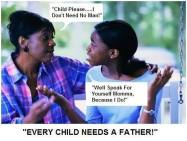 Mothers are more likely than fathers to be alienators and brainwashers (Gardner, 1987). Mothers are more likely to take out their aggression on their children. Selma Kramer (1995) refers to Steele’s research (1970) in stating that children are more physically abused by their mothers, and sexually abused by their fathers. Women may have few means of expressing power, and thereby may use their own children as scapegoats.
Mothers are more likely than fathers to be alienators and brainwashers (Gardner, 1987). Mothers are more likely to take out their aggression on their children. Selma Kramer (1995) refers to Steele’s research (1970) in stating that children are more physically abused by their mothers, and sexually abused by their fathers. Women may have few means of expressing power, and thereby may use their own children as scapegoats.
The mother’s brainwashing of a daughter is particularly powerful due to the daughter’s identification with the mother. Juni and Grimm (1993) in their study of adults and their parents found that the strongest relationships were between mother-daughter and father-son dyads. Troll (1987) found that mother-daughter relationships “… appear to be more complex, ambivalent and ambiguous than do other parent-child configurations.”
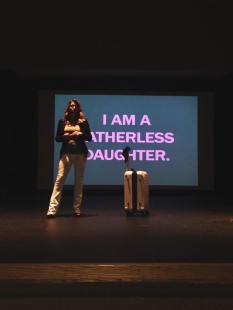
Olver, Aries, and Batgos (1989) found that,”… First born women had the least separate sense of self and reported the greatest degree of maternal involvement and intrusiveness…Men showed a more separate sense of self than women.” They also found that mothers were reported to be more highly involved with and intrusive in the lives of their daughters than their sons.
Gerd Fenchel (1998) points out that the mother-daughter relationship is a primitive latent homosexual one that is intense and ambivalent; one that requires first fusion, then separation for the proper development to occur.
When the mother encourages her daughter to see her father as bad, this can cause an Oedipal fixation in that the daughter may be attracted to men who will mistreat her, or she may mistreat them. The daughter will also have problems with separation from the mother and have problems with attachment and abandonment with subsequent love objects.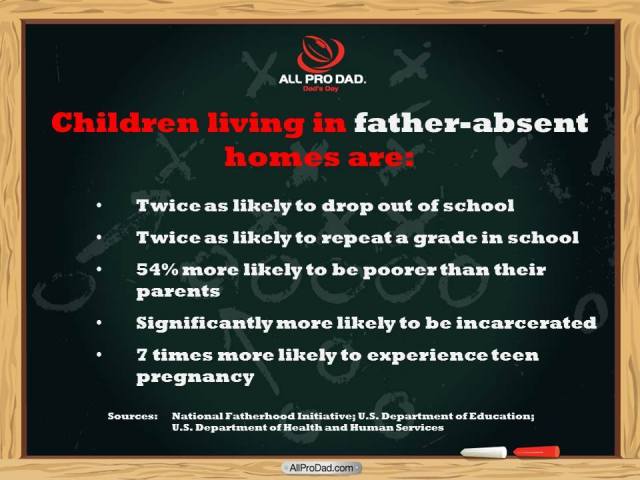 The son has his mother as his Oedipal love object, but is aided in his separation from her when he must go to his father for his male identity. The daughter is more closely tied to her mother as both a primary love object and source of her identity. Her Oedipal drive toward the father fosters development in helping her to separate from her mother and to master the outside world which father represents.
The son has his mother as his Oedipal love object, but is aided in his separation from her when he must go to his father for his male identity. The daughter is more closely tied to her mother as both a primary love object and source of her identity. Her Oedipal drive toward the father fosters development in helping her to separate from her mother and to master the outside world which father represents.
If the mother devalues the father, and sees separation as betrayal, the daughter does not make that necessary break from her mother. The daughter remains too attached to the parasitic mother. The daughter is likely to become insecure, dependent and have love disturbances.

Fathers are very important to their daughter’s feminine development. Biller’s research review (1971) supports that girls who had positive relationships with their fathers were more likely to have satisfying intimacies. When a mother poisons her daughter’s love of her father, she is also damaging her daughter’s ability to maturely love any man. The mother is programming her daughter to be her ego extension without a will of her own, and to be with her and no one else, narcissistically bound.
Although both boys and girls are greatly harmed when they are turned against a parent, the harm is often different. Studies indicate that boys suffer the most harm when the boys are stuck with mothers who express hostility towards their fathers- the source of their male identity (Kelly,1993).
In keeping with the theme of the mother-daughter relationship, I will focus only on the mother-daughter bond in the Parental Alienation Syndrome. Although the daughter’s self-esteem may not suffer as much as the son’s may, her ability to deal with separation and mature relationships with men is very deeply affected.
Wallerstein’s (1989) 10-year longitudinal study of girls from divorced families found that, the nature of the mother-daughter relationship, and the daughter’s identification with her mother were predictive of the daughters’ ability to have healthy relationships with men later on. Daughters who identified with hostile mothers had the poorest adjustment.
A woman has two internal sexual love objects, the mother representation-the original love object, and the father representation-the later Oedipal love object. Both affect object choice.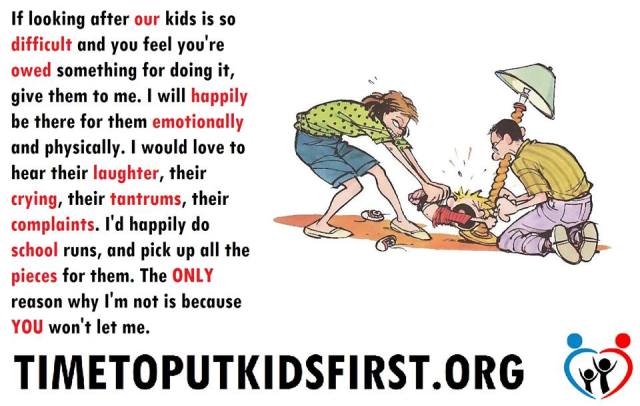 A man has a narrower band of attraction. His love for a woman will always be affected by his internal mother representation. He has his mother as his ever-powerful love object. His father is a latent homosexual love object and source of identification that does not play the same gyroscopic object role as does the mother. A man will not marry a woman like his father.
A man has a narrower band of attraction. His love for a woman will always be affected by his internal mother representation. He has his mother as his ever-powerful love object. His father is a latent homosexual love object and source of identification that does not play the same gyroscopic object role as does the mother. A man will not marry a woman like his father.
A woman however will choose a man in reaction to her mother and/or her father. If the daughter is turned against her father by a hostile paranoid mother (which is often the case), the daughter has internally two core love objects, the hostile mother and the devalued father.
These internal objects will guide her love choices and her behaviors in relationships with men. By picking, provoking or by distorting , she will try to repeat her emotional past with men.
At this point, I wish to make the important distinction between the “emotional past” and the “actual” past. Our neuroses may be based on real events as well as on false perceptions and fantasies. For example, the child is traumatized by the belief and not the reality of the “hated” parent. The child might consciously hate that parent, yet at the unconscious level, the child often secretly loves that parent, who was in fact loving. The “loved” parent may be loved on the conscious level, but feared and hated on the unconscious level.
A patient may start therapy claiming that she was traumatized by her father. She may later realize in therapy that her trauma was based on her mother’s exploitation and hostility. Why would a mother do such harm to her own children? The story of Medea may help us to understand such motives. The Greek drama served the purpose to entertain and be therapeutic. Plays were to provide a catharsis for the collective unspoken traumas and pains of the audience. These classic stories express most beautifully powerful human conflicts characteristic of our universal psychology.
Why would a mother do such harm to her own children? The story of Medea may help us to understand such motives. The Greek drama served the purpose to entertain and be therapeutic. Plays were to provide a catharsis for the collective unspoken traumas and pains of the audience. These classic stories express most beautifully powerful human conflicts characteristic of our universal psychology.
The Medea Complex: The myth.
Euripides wrote Medea around 400 .B.C. It is a story of intense love turned to such intense hate, that Medea killed her own children to get back at her husband for betraying her.
Medea was so madly in love with Jason, that she tricked her own father, King Aeetes, who guarded the Golden Fleece, and killed her own brother so that Jason could steal the Golden Fleece. (Jason might have done well to consider how she treated her father and brother before he married her.)
Eventually, Jason left Medea to marry yet another princess. Medea planed her revenge. The chorus blames Aphrodite for causing all the trouble, in having intense passion turns to hate. (The Greeks displaced psychodynamics onto the gods.)
Medea offered the bride gifts of a beautiful robe and chaplet. When Jason’s new bride put on the gifts, her head and body burst into flame and she died a horrible, painful death. When her father embraced her, he too burst into flames and died the same tortured death.
Medea then took her sword and killed their two children. The chorus amazed at the degree of Medea’s vengefulness doubt that anything can rival a mother’s slaughter of her own innocent children.
Medea escaped Jason with a dragon drawn chariot. She taunted Jason by not allowing him to embrace or bury his sons. She rejoiced at having hurt him so.

Fred Pine (1995) refers to Medea as an example of a particular form of hatred found in women. “Medea’s internal experience is a compound of a sense of injury- a sense that builds to imagined public humiliation and a sense of righteousness. … The righteousness implied here in ‘the wrong they have dared to do to me’ has struck me clinically. It is a frequent accompaniment of hate and hate-based rage. I think it stems from something self-preservative (‘I have been so mistreated that I have this right…’) and some flaw in the super-ego, possibly based on identification with the child’s experience of the rageful mother’s giving herself full permission- and without subsequent remorse- to express her rage toward the child.” (p.109).
That is, Pine suspects that for a mother to be so destructive to her own children, she herself must have been exposed to her own mother’s unremorseful hostility.
Jacobs’ (1988) paper entitled, “Euripides’ Medea: A psychodynamic model of severe divorce pathology” views the Medea mother as “narcissistically scarred, embittered dependent woman…(who) …attempts to sever father-child contact as a means of revenging the injury inflicted on her by the loss of a self-object, her hero-husband.” Jacobs feels that the Medea mother is dependent and that she cannot deal with the loss. Therefore, she holds on to the relationship with hate.
Medea certainly has a flaw in her moral reasoning. We know this early on when she betrays her father and kills her brother to help Jason steal from them. However, she not only kills his new bride and her father, but her own children.
Medea’s love turned to hate is so passionate that she destroys that which intimacy between them produced. The hate goes beyond her instinctive need to protect her own children. Medea must make Jason suffer more than she suffered for it to be revenge.
Jason, “You loved them, and killed them.”
Medea, “To make you feel pain.”
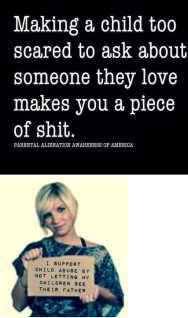
The alienating mother’s rage is rooted in part in a wish to destroy the child, whom she at some level resents being stuck and may turn her rage into over protectiveness as a reaction formation. She is unable to let her children separate from her. She tells them the harm that will befall them when they are out of her control. The mother projects her aggression on to the environment and then makes her children need her protection.
When the mother wishes to punish the father by turning their children against him, she is also aggressing against the children. In her unconscious, both the husband and the children represent the same thing (betrayal and potential betrayal), and destructiveness is wished on them both.
In short, a mother who turns her children against their father probably has at least paranoid features within a borderline or psychotic personality structure (Gordon, 1987). She cannot deal with the loss, and remains tied to her (ex) husband in an intimate hate, and keeps her children tied to her out of fear.
Brainwashing and Parental Alienation Syndrome
I agree with Gardner’s (1987) assessment that most mothers in custody disputes do some form of brainwashing. I have found that mothers’ attempts to turn their children against their fathers in custody disputes are common. I have also found that this is by far the most destructive aspect of divorce on children. I now consider Parental Alienation of children as a form of child abuse, since it leads to enduring psychopathology.
Kelly’s (1993) longitudinal research of child’s post-divorce adjustment found that the majority of children adjust to divorce, and older children express relief. Most symptoms last 6 months to 2 years post separation, and usually only involve adjustment disorders. (I discuss this further in chapter 11 Children of Divorce.) Only about 10% of divorcing couples with children fight over custody. Of this group, at least one parent often has hostile, egocentric and paranoid features. In a study of MMPIs given to parents in custody evaluations, the MMPI’s of the parents who lost the custody dispute had significantly higher scores in Psychopathic Deviant (hostility), Paranoia, and Mania (narcissistic and impulsive tendencies), than parents who won the custody dispute (Otto and Collins, 1995).
Only about 10% of divorcing couples with children fight over custody. Of this group, at least one parent often has hostile, egocentric and paranoid features. In a study of MMPIs given to parents in custody evaluations, the MMPI’s of the parents who lost the custody dispute had significantly higher scores in Psychopathic Deviant (hostility), Paranoia, and Mania (narcissistic and impulsive tendencies), than parents who won the custody dispute (Otto and Collins, 1995).
Most children do adjust to divorce, except if a disturbed parent uses them as a pawn to punish the other parent. This traumatizes the child, and its effects may be life long, and is often passed on generation after generation.
Gardner (1987) stated, “Although the mothers in these situations may have a variety of motivations for programming their children against their fathers, the most common one relates to the old saying, ‘Hell hath no fury like a woman scorned.’ … Because these mothers are separated, and cannot retaliate directly at their husbands, they wreak vengeance by attempting to deprive their former spouses of their most treasured possessions, the children. And the brainwashing program is an attempt to achieve this goal” (p.87).
Gardner also feels that these mothers are aggressing against their own children by brainwashing them against their fathers. “These mothers exhibit the mechanism of reaction formation, in that their obsessive love of their children is often a cover-up for their underlying hostility” (p.87)…”And when these mothers “win”, they not only win custody, but they win total alienation of their children from the hated spouse. The victory here results in psychological destruction of the children which, I believe, is what they basically want anyway” (p.88).
Brainwashing is a conscious act of programming the child against the other parent. However, Gardner went on to describe what he refers to as “Parental Alienation Syndrome”. The concept of the Parental Alienation Syndrome includes the brainwashing component, but is more inclusive. It includes not only conscious but also unconscious factors within the programming parent that contribute to the child’s alienation from the other parent.
Furthermore, it includes factors that arise within the child- independent of the parental contributions. The child may justify the alienation with memories of minor altercations experienced in the relationship with the hated parent. These are usually trivial and are experiences that most children quickly forget.
These children may even refuse to accept evidence that is obvious proof of the hated parent’s position. Commonly these children will accept as 100 percent valid the allegations of the loved parent against the hated one. All human relationships are ambivalent… the concept of ‘Mixed feelings’ has no place in these children’s scheme of things. The hated parent is ‘all bad’ and the loved parent is ‘all good’ (Gardner,1987 p.73).
Dunne and Hedrick (1994) in their research found that Parental Alienation Syndrome (PAS) “appeared to be primarily a function of the pathology of the alienating parent and that parent’s relationship with the children. PAS did not signify dysfunction in the alienated parent or in the relationship between that parent and child.” This study supports Gardner’s definition of Parental Alienation Syndrome as a pathological reaction to a parent, and not a conflict arising out the real relationship with real abuse.
Gardner also refers to factors arising within the child who contributes to Parental Alienation Syndrome, such as the fear of losing the love of the alienating mother, since “the loved parent is feared much more than loved.” p.90.
Additionally, Oedipal factors are sometimes operative in the Parental Alienation Syndrome. A daughter may resent the father’s new female partner, and may identify with her mother’s jealousy and rage, and the daughter may revenge by rejecting him.
Damaged Ability for Separation and Intimacy
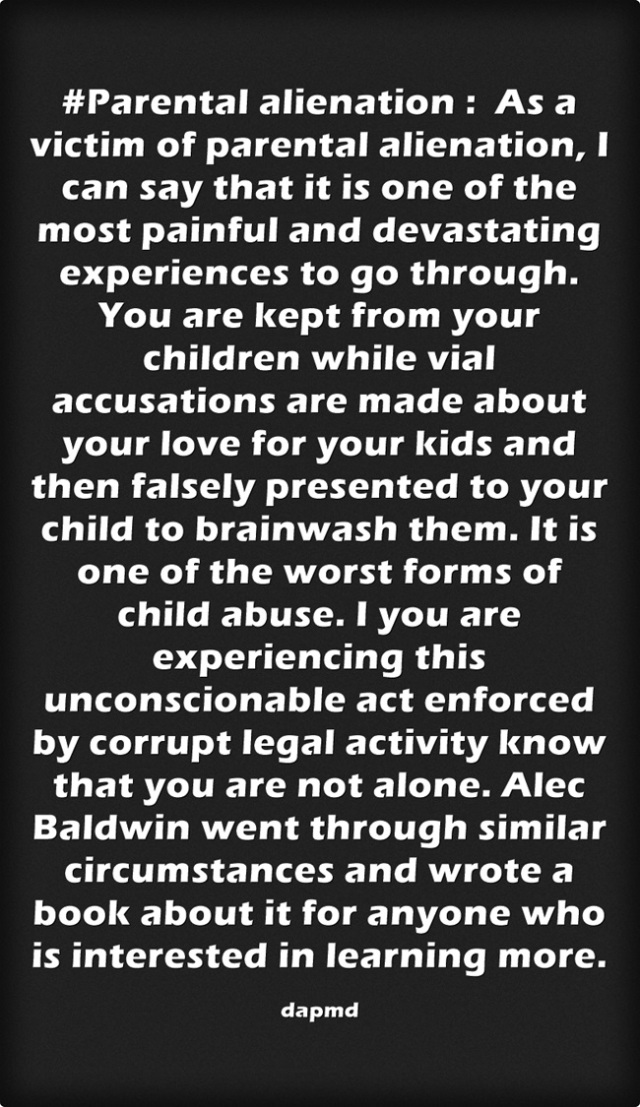 A daughter has her mother as the primary love object. Then she shifts to her father as the Oedipal love object. These two internal objects guide her attractions and patterns of intimacy.
A daughter has her mother as the primary love object. Then she shifts to her father as the Oedipal love object. These two internal objects guide her attractions and patterns of intimacy.
If she had a rejecting father, but a healthy loving mother, the daughter will have problems in her relationships with men. However, she has a good prognosis for overcoming this problem. If her mother was healthy, the daughter has a firm base from which to grow.
However, if her mother has a Medea Complex, the daughter is more likely to have a damaged ability to love maturely. Both her primary love object, the mother, and her Oedipal love object, the father, are internally driving her to self-defeating relationships.
To love a man is to betray her mother. She can only love as she has been taught and shown. The daughter will find unconscious ways to undermine relationships by repeating love dramas.
A person can unconsciously undermine love relations in three ways: picking (object choice), provoking (projective identification) and distorting (transference and projection):
Picking: Denise came from an upper middle class family. Denise’s mother refused to let her father visit her after their separation when Denise was five. By the time the court ordered shared custody, Denise’s mother had alienated her against her father. Denise refused to go with him. When she did go, the Parental Alienation Syndrome was so entrenched, that she provoked fights so bad, that eventually her father discontinued the shared custody.
She had seen very little of her father since, and remained very close with her over protective paranoid mother.
Denise and her mother where very symbiotic. Denise was also very protective of her mother, sensing her mother’s need for her. When Denise entered treatment at 34, she had not been married, nor has she been able to be in an intimate relationship with a man for more than two years. She only had chemistry for men who were of a lower social class who were rejecting or abusive.
She often suffered from depression and anxiety. She had trouble separating from her boyfriends. Denise was attracted to men who represented her mother’s and her own image of her father as a “bum”. Her attraction was also based on her attachment to her mother who was exploitive and destructive to Denise.
These two love objects, her mother’s view of the father and the hostile mother, both formed her attraction to men. Denise fell in love with men who were in fact both her mother and her fantasized Oedipal father- tainted by the mother. She alternately saw me as the overly controlling mother, or as the rejecting abandoning father.
I actively confronted her trivial complaints against her father as evidence of Parental Alienation Syndrome. As she worked through the hostile transference in treatment, she began to realize how her mother had distorted her father, and how her mother had used and injured her.
Toward the fifth year of analytic treatment, Denise developed a warm trusting relationship with me. She was then able to feel deep attraction to and fall in love with a kind and reasonable man. When she felt irrational aggression toward him, she was able to use insight about her past programming. Denise also reconciled with her father, and enjoyed a new relationship with him.
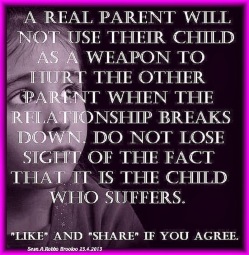
Provoking: Lora came to treatment for phobias and general anxiety. She had little psychological mindedness, and at 37, though very attractive, had only rationalizations to explain why she had only short-term unhappy relationships with men.
She spoke about men as a typically disturbed gender. Her parents fought bitterly until their separation when Lora was 10. She lived with her mother who told her that her father was mentally ill and often made fun of him. She saw little of her father, who she devalued as ineffectual and crazy.
When Lora would be in an intimate relationship, she would tell him that she is easy going and got along with everyone. This was far from the fact. She had little self-reflection. She would find the most outrageous ways to provoke her boy friends. Even the meekest would be provoked to outrage.
At which point Lora would distort the events and project the blame for the conflict onto the boy friend. She would tell him that he had distorted everything because of his personal problems, but that she could love him anyway.
Lora would commonly enact this with me. I would interpret her behavior to her, and she would somehow rewrite history and complain, “You are projecting your personal problems on to me. How can I get better, if you don’t have your own head on straight?”
Lora was able to repeat her emotional past by provoking conflicts in her relationships. She resisted any interpretations into her own aggression, or that she was distorting men as crazy and ineffectual. Lora was too tied to her mother to be objective.
She constantly tried to provoke fights with me. The transference was stormy, and she remained provocative and insightless. She soon dropped out of treatment, thinking that I was more disturbed than her, thus repeating her usual pattern.
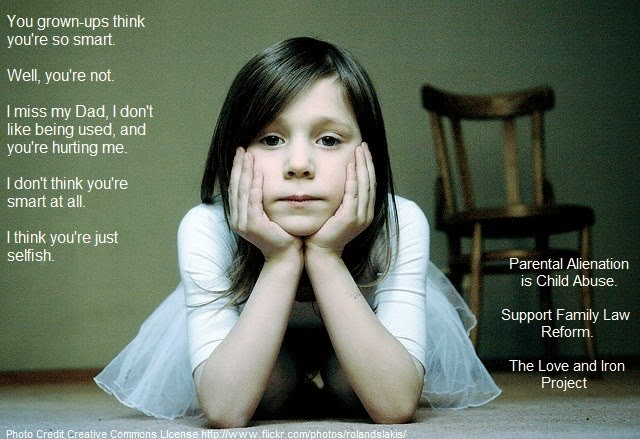
Distorting: Sue entered treatment at 46, with two failed marriages and many failed affairs. Sue’s mother was diagnosed with schizophrenia and was hospitalized several times when Sue was a child. Although her parents remained together, it was a very conflicted relationship.
She did not feel close to her cold father. Her mother was unpredictable and was often paranoid about her father. Her mother viewed Sue’s developmental stages as betrayals and guilt induced Sue for her attempts at becoming autonomous.
Her mother was hostile to her father and men in general, who were considered the sole source of women’s suffering. (Although, I define the Medea mother in the context of divorce, the Medea complex can exist in marriage where the mother has the paranoid perception of her husband as psychologically abandoning her. She will turn the children against him, and damage her children just the same.)
Sue was high functioning in her job despite her borderline personality disorder. She is intelligent and functioned well in her profession, and had some close friendships. However, she regressed in intimacies. She became paranoid and depressed in her relationships with men.
She would become extremely jealous, demanding, intolerant of separations, controlling and would have fits of rage as a reaction to imaged insults. She would drive even the most tolerant men away, and come to the conclusion that her mother was right all along about them.
She distorted the men in her life to justify her rage. She became like her paranoid mother when she was with men. Although Sue in her six plus years of treatment made great progress in her self esteem and became less likely to fall into deep depressions, she still had the tendency to regress in intimacy. Like most borderlines, she stayed better compensated outside of passionate relationships.
Sue’s reality testing remained good, except in intense committed intimacies, where the pressure to distort men became overwhelming. This distortion was rooted not so much in her relationship with her distant father, but more based on her terrifying relationship with her psychotic mother.
Distorting men allowed Sue to displace her unconscious anger at her mother on to men. Sue feared expressing anger at her mother. Sue also distorted men so she can eventually escape from terrifying intimacy. She feared that love would harm her, as did her mother’s love. Sue projected on to men her own aggression. Destroying her relationships with men also helped to keep her psychically tied to her mother.
People can repeat the emotional past by picking, provoking and distorting the love object to fit the internal unconscious love drama.
Although I have presented the ways that people repeat their emotional past as three separate psychological mechanisms: picking, provoking and distorting, they usually occur together. Individuals that are more disturbed provoke and distort more than higher functioning individuals who mainly repeat their past object relations by who they pick.
I have found that those people who have been alienated against a parent in childhood will have love disturbances. If they are to have a chance at healthy relationships, they will need to work through their love dramas in the therapeutic committed intimacy with the therapist.
Many non-analytically trained individuals, not working with unconscious distortions, take at face value the patient’s complaints and memories, and thereby reinforce the alienation and the love disturbances. Working with only the conscious is too superficial to get to the damage from early pathological attachment. Patients have a hard time putting into language all that they felt and parents implied or acted out. A disturbed parent uses language to rationalize and to distort reality. Interpretations can make sense out of confused emotions. The therapy also needs to be a holding environment with a good container. The therapeutic relationship must be long and intense to achieve the necessary personal growth.

Patients who have Parental Alienation Syndrome will frequently try to “divorce” the therapist, using the same or similar complaints of the alienating parent. The Medea mother is unconsciously feared and she becomes a sacred cow. The adult patient will at first feel guilt at any feelings of aggression towards the mother, and often blames the therapist for “creating” their aggression. The patient may project on to the therapist the wish to blame and punish the alienating parent.
Once the patient emotionally accepts that intimacy with the therapist is not dangerous, the patient will be able to take on their deeper feelings about their mother, and work them through.
However, when working with children with Parental Alienation Syndrome the work is more concrete and reality based. Rather than working through the transference, a form of “deprogramming” is necessary. This is a deviation from the usual neutral analytic stance.
Young children idealize their parents as a source of self-esteem. The therapist at first needs to protect this idealization. However, the therapist after establishing a therapeutic alliance with the child can begin to point out “errors” that the mother made. The therapist then humanizes the alienated parent through reality clarifications. Eventually, the alienated parent needs to be brought into treatment with the child.
Sometime the alienated parent and child(ren) need to go to a residential treatment facility away from the alienating parent. The goal is for the child to move from splitting the world into good and evil, to developing the capacity for a healthy natural ambivalence in intimacy.
Three Generations of Parental Alienation Syndrome: A Case Study
Richard was raised by two parents with Parental Alienation Syndrome. Richard’s mother and father were from divorced parents. Both his mother and his father as children were turned against their fathers by their mothers.
Richard’s wife was turned against her father by her mother. His wife had Parental Alienation Syndrome, and later his wife turned his children against him and they would develop Parental Alienation Syndrome. This is not coincidence. This is an example of how unresolved issues unconsciously are repeated across generations.
Richard met his wife Kathy in college. Although Richard was attracted to Kathy who was from a different social and religious background, he nevertheless unconsciously picked someone who was psychologically similar to his mother.
Kathy came from divorced parents. Kathy’s father was an alcoholic and her mother was paranoid and provocative.
Her mother would provoke the father to beat the children. When he would beat them, Kathy’s mother would act helpless, and later align with her children against the father. She constantly included her children in her suspicions that their father was engaged in affairs. The mother used these suspicions to justify her own affair for which she felt entitled. Kathy told her father about the mother’s affair, which ended the marriage. They divorced when Kathy was a teenager.
Kathy had Parental Alienation Syndrome with her father after her parent’s divorce. She remained tied to her mother, both hating her and feeling dependent on her.
Although Kathy felt dependent on Richard, Kathy was unable to feel love for him. Soon after they were married, Kathy accused him of having affairs, and believed that he was the cause of all her fears and insecurities. She, the same as Richard’s mother, never said that she loved Richard. Richard rationalized this away as he had learned to do in his childhood. After four years of marriage, two unplanned pregnancies gave them a daughter and then two years latter, a son. Kathy was overwhelmed by this second pregnancy. She regressed and became even more hostile toward Richard. She feared having children, and told Richard that she was afraid that she might abuse them.
After four years of marriage, two unplanned pregnancies gave them a daughter and then two years latter, a son. Kathy was overwhelmed by this second pregnancy. She regressed and became even more hostile toward Richard. She feared having children, and told Richard that she was afraid that she might abuse them.
Richard took an active role with the children, but Kathy began to interfere with his time with them. She would schedule activities during the times he was to be with his children.
During his analysis with me, Richard was able to accept that his mother was unable to love, and grieved the loss of not having had a loving mother. When Richard worked through many of the issues of his childhood in analysis, he was able to see how he had repeated his attachment pattern in his choice of Kathy as a wife. He had grown to feel deserving of love.
On their eleventh wedding anniversary, he asked Kathy what she felt toward him. She admitted after 11 years of marriage that she never loved him. She said that she was unable to love anyone. She admitted that she could only feel hate for him, but added, “Don’t take it personally.”
Richard then left the marriage. They had agreed to joint custody of their son who was three and their daughter who was five. Richard agreed to leave the martial home so not to disrupt the children. Richard naively thought that even though Kathy could feel only hate or emptiness, that somehow in the separation she would become a friend.
Kathy withdrew all their money from joint accounts, changed the locks and refused to let him see the children. Kathy told him that he would have to go to court if he ever expected to see his children again.
By the time the court ordered home study six months later, the children were brainwashed against him. He had always been involved with his children, but now the children were clearly more distant and cool to him.
The social worker who had done the home study had been recently divorced. She wrote her report in favor of the mother. The social worker had no understanding of psychodiagnostics or Parental Alienation Syndrome.
Richard petitioned the court to have Dr. Richard Gardner appointed the court’s impartial evaluator. When Richard finally saw Dr. Gardner, he told Richard that he was biased in favor of mother’s having custody of young children, since mothers’ bond with children are stronger. (Soon after, Dr. Gardner modified this belief.)
Gardner told him that he would have an up hill fight for 50% physical custody. Richard claimed that Kathy was paranoid and resented his happiness. He said that he would present evidence her turning the children against him, actively working to destroy his reputation and his professional practice and her attempt to drive him out of town.
Richard provided evidence of Kathy lodging a false ethics complaint against him to his local professional group, and spreading false rumors to his referral sources to destroy his practice.
Richard played taped interviews of colleagues stating that his wife was spreading false and malicious rumors about him. Dr. Gardner heard the chairperson of the ethics committee confirm that Kathy made a false complaint.
Gardner asked the daughter, then 6 years old, why she had to move from her home. The daughter replied, “Because my mommy was afraid that daddy would come and destroy my home… He came over and put marks on our car…Mommy said that she could never be happy until he was dead… Mommy hoped that he was shot at the bank that was robbed” (referring to a recent mass shooting at a local bank).
Both the daughter and the son described their father as immoral, dangerous, and not to be trusted or loved.
Gardner observed in the sessions with the father and children, that the father was warmer and interacted more comfortably with the children and understood their emotional needs better than the mother.
Dr. Gardner eventually wrote in his report to the court that Kathy showed signs of paranoid delusions, that she was a fabricator and was brainwashing her children against their father. He also stated that if it were not for the father’s prior frequent and positive involvement with his children, the Parental Alienation Syndrome would have been complete. He suggested that Richard have full legal custody and 50% physical custody.
In the years that followed, Kathy remained alone, and did not get involved with men. She continued to undermine Richard’s relationship with his children. When his children reached adolescence, they refused to see him or talk with him.
Richard had been sending both the children for therapy. After three years of both children not making progress in their therapy, Richard finally asked their therapist if he could be included in joint sessions with his children.
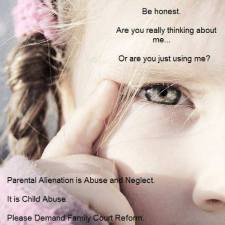
Each child had a long list of secret complaints, they had not verbalized to their father. Consistent with Parental Alienation Syndrome the complaints were trivial, exaggerated or false memories. The therapist had inadvertently reinforced many of the children’s perceptions of the father, taking much of their complaints of him at face value. (Some time later, after that therapist was fired. The employing psychologist told Richard that the therapist hated her own father and had no relationship with him.)
The children’s therapist had not questioned the distortions or inconsistencies in their complaints. For example, his daughter claimed that one Christmas when she was six, her father gave her coal for Christmas. His daughter said, “You thought this was funny, I tried not to show my hurt, but I was very hurt.”
The father firmly stated that this never happened. This denial was evidence according to the children of their father’s defensiveness. The therapist also thought that the father was being defensive. Richard gave his daughter the phone number of his friend who was there at the time, so that his daughter might ask her if he ever had given her coal for Christmas. His daughter avoided making the phone call, because she needed to maintain her negative view of her father and maintain her alliance with her mother.
The father told the therapist that he was certain that he had filmed the Christmas in question. In the next session, Richard brought a small TV/video player. He first played a scene about an incident recalled by his son that had occurred around that same Christmas.
His son claimed that Richard was brainwashing him against his mother by playing a board game that he distinctly remembered ten years ago when he was four years old. The game was Richard Gardner’s “Talking, Feeling, Doing Game”.
The mother did not want the children to play the board game with the father. The mother told the children that it was a game to teach them to hate her. The board game in fact, only encouraged the open expression of feelings without blame. His son internalized his mother’s perceptions of the game and had false memories of it. After the mother’s complaints about the game, the children refused to play any more such board games with the father.
When his son saw the very scene that he described on the video tape, he was first struck by how young he was at the time. He seemed confused that not only did the incident not occur as he had remembered it, but that his father was being supportive and sensitive to his feelings to love both parents. The recording clearly showed him and his sister enjoying their father at the time.
The Christmas scene recording showed both children excitedly opening many presents and playing with new toys with utter delight. There was no coal, no sadness.
The both children were amazed at what they were watching. They had been certain of their vivid memories of 10 years ago, when they were small children.
In that session, Richard’s daughter said that she might have remembered it wrong. The therapist was furious at the father. She questioned if this was the same Christmas that the children were recalling. The father reminded their therapist that they were Jewish. This one Christmas was celebrated at a Christian’s friend’s home during the time of the custody evaluation.
In the next session, Richard read the section of Dr. Gardner’s report stating that their mother had brainwashed them against him.
He read about her paranoia about the board game, and some of the blatant paranoid statements she had made. The daughter stated to her younger brother who was still struggling with his feelings, “What he is saying is probably true. I know that now.”
The children began to have occasional brief visits with the father. When the daughter went off to college, she wrote to the father that she never loved him and did not wish to see him again.
Richard’s son wanted to work on their relationship in his last year of high school. His son lived with him for a few months before leaving for college. In retaliation, Kathy threatened to take the son’s money and cut him off. Richard and his son grew closer during his son’s college years.
Richard remarried. Kathy never got involved with anyone. Richard has a close relationship with his son, but has no relationship with his daughter. His son was able to have a long-term rewarding intimacy with a sweet young woman. Richard heard that his daughter has serious troubles with trust and intimacy similar to the mother.
This case illustrates that the Parental Alienation Syndrome and the Medea Complex can continue for generations. I do not think it can be broken without working through the splitting of the all good alienating parent, and all bad alienated parent and going through a grieving process. Without these conditions, later love relationships will suffer and the pathological relationships will continue for generations.
Source: Parental Alienation Syndrome Research


 When Mothers Damage Their Daughter’s Ability to Love a Man The Mother-Daughter Relationship Echoes Through Time. Ed. by Gerd H. Fenchel. Jason Aronson Inc. Northvale, New Jersey. Updated and rewritten in Gordon, R.M. (2006d) An Expert Look at Love, Intimacy and Personal Growth. IAPT Press, Allentown, Pa. (Chapter 5 Medea and Parental Alienation)
When Mothers Damage Their Daughter’s Ability to Love a Man The Mother-Daughter Relationship Echoes Through Time. Ed. by Gerd H. Fenchel. Jason Aronson Inc. Northvale, New Jersey. Updated and rewritten in Gordon, R.M. (2006d) An Expert Look at Love, Intimacy and Personal Growth. IAPT Press, Allentown, Pa. (Chapter 5 Medea and Parental Alienation)














LikeLiked by 4 people
LikeLiked by 3 people
LikeLiked by 2 people
LikeLiked by 2 people